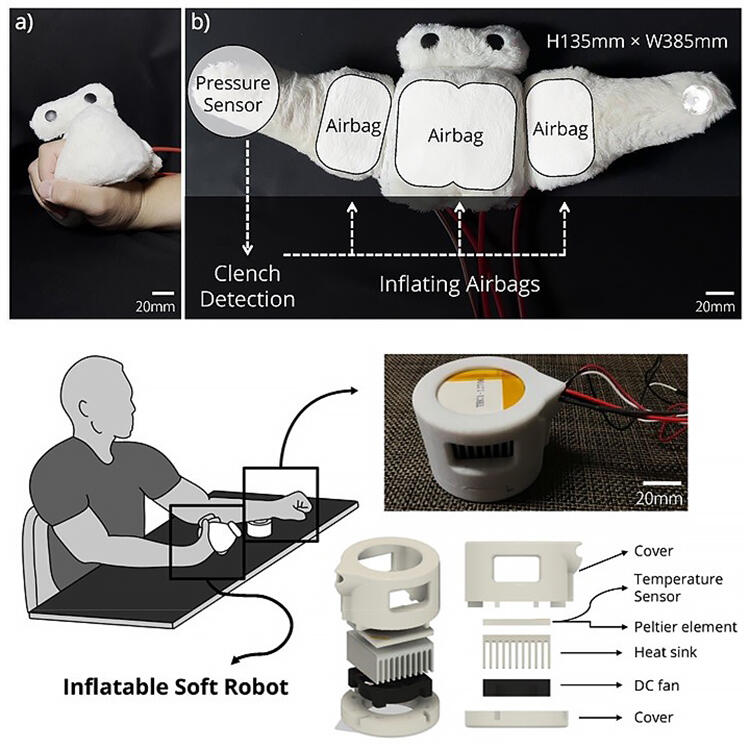Patting or rubbing someone's arm or back is a commonly used method for relieving pain or anxiety in nursing and long-term care settings. The benefits of this kind of contact, collectively called 'social touch', have been reported in various academic fields. Social touch between humans and robots has also begun to be studied in recent years.
A research group led by Associate Professor Fumihide Tanaka from the Intelligent and Mechanical Interaction Systems Course at the Faculty of Engineering, Information and Systems, University of Tsukuba, has been developing a hand-held soft wearable robot to relieve pain and fear. The group has now quantitatively confirmed the effectiveness of this robot for the first time.
The developed prototype (codenamed Reliebo) is the size of an adult's fist and is covered in soft fur. The robot has a head that can be adjusted via twisting to make eye contact with the user. Airbags, located on the palm-facing and outer-facing sides, can be inflated when the user clenches Reliebo in their hand, giving the them the sensation of their hand being held. The device can give the user the sensation of both holding and have their hand held simultaneously.

Thermal pain stimulator and experimental setup (below)
Provided by Tsukuba University
To test the effectiveness of the prototype, experiments were conducted with more than 70 undergraduate and graduate students. The experiment's protocol involved thermal stimulation, an established technique in the field of pain research. In addition to a verbal interview using the Pain Assessment Scale (PAS), researchers analyzed saliva collected from the participants during the experiment to assess pain. A questionnaire was also administered to participants asking about their level of anxiety and fear of injections.
Researchers analyzed data from 66 individuals (excluding samples where saliva collection procedures were unsuccessful). The analysis revealed significantly lower pain values from the verbal responses based on the PAS scale in the condition in which participants wore the robot compared to the condition in which they did not. Furthermore, saliva analysis showed a tendency for oxytocin levels to decrease in the robot-wearing condition, especially in the condition where the robot returned the grip in response to the user's grip. Oxytocin has been reported to decrease as a person's stress level decreases.
Other survey results based on eight specific experiences of injections (blood tests, anesthetic during dental treatments, vaccinations, etc.) also showed that participants' fear of injections decreased significantly after participating in the experiment.
In the future, the research team aims to integrate similar kinds of real-space robots with virtual reality (VR), augmented reality (AR), and other methods in virtual worlds to relieve pain and anxiety in a broader range of situations while also expanding the concept's applications.
Journal Information
Publication: Scientific Reports
Title: A wearable soft robot that can alleviate the pain and fear of the wearer
DOI: 10.1038/s41598-022-21183-7
This article has been translated by JST with permission from The Science News Ltd.(https://sci-news.co.jp/). Unauthorized reproduction of the article and photographs is prohibited.




